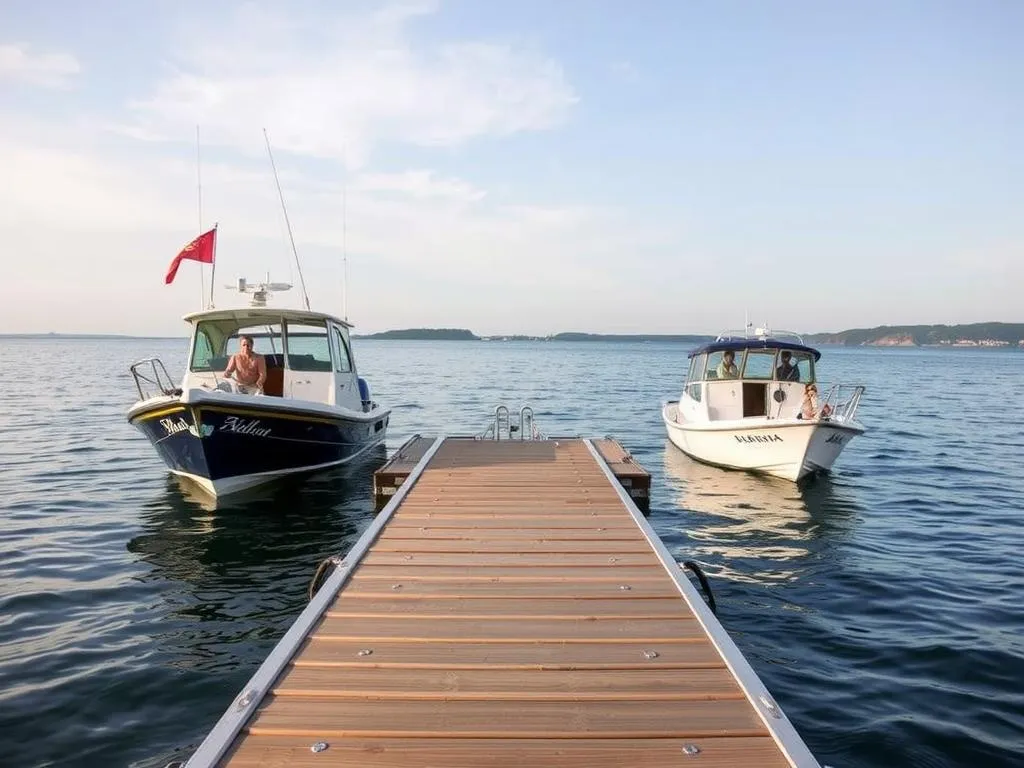
Introduction
Ensuring the health and safety of our furry companions is paramount, especially when engaging in outdoor activities like boating. Dogs thrive on physical activity and adventure, but these experiences come with risks. Providing safe access to boats is crucial, and this is where the best dog ramps for boats come into play. Not only do they facilitate easy access for dogs, but they also help prevent injuries that can occur when dogs jump in and out of boats.
This article explores the significance of dog health care, the risks associated with boating activities, and the best ramps available that can ensure your dog’s safety during your aquatic adventures.
Understanding Dog Health and Safety
Importance of Dog Health Care
Dog health care encompasses a range of needs, from regular vet check-ups to proper nutrition and exercise. Keeping dogs physically active is essential for their overall well-being, as it helps maintain a healthy weight, boosts mental health, and strengthens their muscles and joints. Boating can be a fantastic way to provide exercise and mental stimulation for your dog, but it comes with unique challenges.
Risks of Boating for Dogs
While boating can be a delightful experience for both dogs and their owners, there are inherent risks. Dogs may become overly excited and jump into the water or attempt to board the boat, leading to potential injuries. Common hazards include:
- Sprains and Fractures: Dogs can easily slip or fall when jumping into or out of a boat.
- Drowning Risks: Even strong swimmers can tire out quickly or become disoriented.
- Heat Exhaustion: Dogs can overheat quickly when exposed to the sun, leading to serious health issues.
Why Ramps are Essential
To mitigate these risks, using a ramp is highly beneficial. Ramps provide a safe and controlled way for dogs to access boats, reducing the likelihood of injuries and other hazards. By enabling dogs to walk or trot onto the boat instead of jumping, ramps can significantly enhance safety and comfort for your pet.
Key Features to Look for in Dog Ramps for Boats
When searching for the best dog ramps for boats, there are several essential features to consider:
Material and Durability
The materials used in a dog ramp are crucial for its longevity and effectiveness. Common materials include:
- Aluminum: Lightweight, rust-resistant, and durable, making it ideal for marine environments.
- Plastic: Often less expensive and easy to clean, but may not be as sturdy.
- Wood: Aesthetic appeal but may warp or rot if not treated properly.
Weight Capacity
Knowing your dog’s weight is vital when selecting a ramp. Each ramp has a specified weight limit, generally ranging from 150 to 300 pounds. Always choose a ramp that can accommodate your dog’s weight comfortably to ensure stability and safety.
Size and Portability
Consider the dimensions of the ramp, including its length and width. A longer ramp can make it easier for dogs to walk up, especially for larger boats. Additionally, portability is essential; the ramp should be lightweight and easy to store or transport.
Traction and Stability
A ramp with a non-slip surface is vital for your dog’s safety. Look for ramps that feature textured surfaces or rubber grips to prevent slipping. Stability features, such as wider bases or adjustable legs, can also help keep the ramp securely in place during use.
Adjustable Height
An adjustable ramp can accommodate different boat heights, making it versatile for various watercraft. Ensure that the ramp can be easily modified to fit your needs and that you can adjust it securely.
Top 5 Best Dog Ramps for Boats
Here are five of the best dog ramps for boats available on the market today, each with unique features that cater to different needs:
Ramp 1: PetSTEP Original Folding Pet Ramp
The PetSTEP Original Folding Pet Ramp is made from durable plastic and rubber.
- Pros: Lightweight, easy to clean, and folds for convenient storage. Non-slip surface ensures safety.
- Cons: Slightly more expensive than some plastic alternatives.
- Price Range: $100 – $150.
Ramp 2: Paws Aboard Dog Boat Ladder
Designed specifically for boat access, the Paws Aboard Dog Boat Ladder features a lightweight and collapsible design.
- Pros: Easy to attach to any boat, portable, and adjustable height.
- Cons: May require additional support for larger dogs.
- Price Range: $50 – $80.
Ramp 3: Gen7Pets Natural Step Pet Ramp
The Gen7Pets Natural Step Pet Ramp is perfect for larger dogs, featuring a sturdy construction.
- Pros: Solid wood with a non-slip surface, supports heavier dogs, and is aesthetically pleasing.
- Cons: Heavier than other options, making transport more challenging.
- Price Range: $100 – $130.
Ramp 4: PetSafe Happy Ride Pet Ramp
The PetSafe Happy Ride Pet Ramp is designed with versatility in mind, suitable for cars and boats.
- Pros: Lightweight, collapsible, and includes a safety tether.
- Cons: Limited weight capacity; best for smaller to medium-sized dogs.
- Price Range: $80 – $100.
Ramp 5: Solvit PupSTEP Plus Pet Stairs
Though primarily designed for stairs, the Solvit PupSTEP Plus can be used for boats as well.
- Pros: Lightweight, portable, and affordable.
- Cons: Not specifically designed for boat use; limited height.
- Price Range: $50 – $70.
How to Train Your Dog to Use a Ramp
Training your dog to use a ramp can significantly enhance their safety and comfort. Here’s how to start:
Introduction to Ramp Training
Familiarizing your dog with the ramp is essential. A positive training experience will encourage your dog to use the ramp confidently.
Step-by-Step Training Process
-
Desensitization: Begin by letting your dog explore the ramp while it’s flat on the ground. Allow them to sniff and investigate.
-
Encouragement Techniques: Use treats and praise to coax your dog onto the ramp. Gradually increase the angle of the ramp as they become more comfortable.
-
Gradual Introduction to Different Angles and Heights: Once your dog is confident using the ramp at a low angle, slowly increase the height to simulate the boat’s height.
Common Challenges and Solutions
- Fear or Hesitation: If your dog shows fear, backtrack to previous steps and allow them to acclimate to the ramp again.
- Resistance: Use their favorite toys or treats to motivate them. You can also have another person encourage the dog from the boat.
Additional Dog Health Tips for Boating
Hydration and Sun Protection
Keeping your dog hydrated is crucial during boating trips. Bring enough fresh water and offer it frequently. Additionally, protect your dog from the sun using dog-friendly sunscreen, and provide shade when possible.
Safety Gear for Dogs
Invest in a good-quality life jacket designed for dogs, especially if they are not strong swimmers. Ensure your dog has identification tags in case they get lost while boating.
Post-Boating Health Check
After your outing, monitor your dog for signs of fatigue, injuries, or unusual behavior. Check for any cuts or scrapes, and consult your veterinarian if you notice anything concerning.
Conclusion
Investing in the best dog ramps for boats is essential for ensuring your dog’s safety while enjoying your time on the water. By understanding the features that matter and training your dog to use the ramp, you can significantly reduce the risks associated with boating activities. Prioritizing both fun and safety will ensure your boating adventures are enjoyable for you and your furry friend.
FAQs
What size ramp do I need for my dog?
Choose a ramp that can accommodate your dog’s weight and size comfortably. Generally, look for ramps that are 12-16 inches wide and long enough to provide an easy incline.
Can all dogs use ramps?
Most dogs can use ramps; however, older or disabled dogs may require additional training or a specialized ramp designed for their needs.
How do I clean and maintain my dog ramp?
Regularly wipe down your ramp with mild soap and water. Ensure it dries completely before storing it to prevent mold or mildew.
Are there ramps specifically designed for certain dog breeds?
Some ramps are designed with specific weight limits and sizes in mind. Always check the specifications to ensure it meets your dog’s needs.
What should I do if my dog refuses to use the ramp?
If your dog is hesitant, revert to familiarization techniques using treats and positive reinforcement. Patience is key in training.









